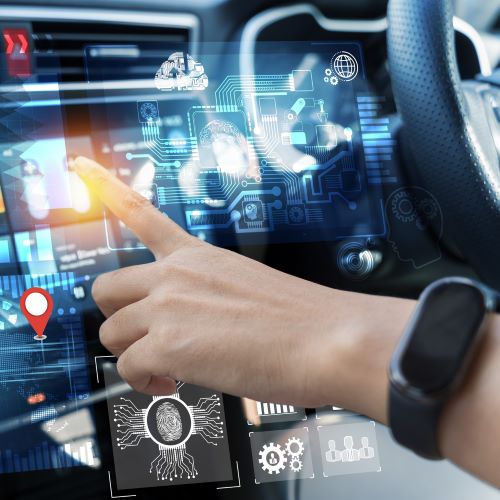11 June 2025
 Would you trust a driverless car? A 2024 global survey involving nearly 8000 participants suggests most people are wary of handing over the steering wheel to sensors, cameras and computer algorithms.
Would you trust a driverless car? A 2024 global survey involving nearly 8000 participants suggests most people are wary of handing over the steering wheel to sensors, cameras and computer algorithms.
However, a new study by Australian and French researchers shows that augmented reality (AR) could increase overall confidence in autonomous vehicles by simulating the experience and allowing drivers to personalise the AR interface.
The University of South Australia (UniSA) and IMT Atlantique created a sophisticated virtual reality driving simulator using headsets, testing seven AR visualisations with 28 participants, where information about driving conditions was added, modified and even removed from the simulation.
The participants were aged 22-50 and included 18 males and 10 females.
AR can deliver real-time, critical information directly onto the windshield or dash, alerting drivers to potential hazards and obstacles, speed limits and navigation directions. The technology uses sensors to deliver the data, ensuring that drivers stay focused on the road while accessing critical information.
Driving-related AR visuals included navigation paths, incoming vehicle alerts and pedestrians; and non-driving visuals ranged from aesthetic modifications to points of interest, such as cafes and dinosaur parks.
The researchers found that participants’ trust in autonomous vehicles was “significantly increased” when AR was used to add or change driving-related information, tailoring visual cues based on a driver’s preference, attention patterns and stress levels.
“Trust is a major barrier to the widespread adoption of autonomous vehicles,” says UniSA and IMT Atlantique PhD candidate Hoa Tran, who led the study.
“Despite autonomous vehicles being generally safer than human drivers in routine conditions, there is a global reluctance to fully embrace them, but augmented reality might be able to change that.
“The AR visuals helped participants understand the autonomous vehicle’s decision-making process, which is especially important in complex traffic scenarios,” Hoa says.
Even non-driving related additions, like landmarks or interior design enhancements in the car, improved trust among users. However, they also carried a greater risk of driver distraction.
Conversely, removing certain types of information – such as unnecessary pedestrian visuals or visual obstructions in the car – was helpful for reducing mental clutter, but it negatively affected user confidence.
“The message is that less isn’t always more,” says co-author UniSA researcher Dr James Walsh.
“The design of AR in autonomous vehicles needs to balance clarity with user comfort and personal preference.”
Researchers suggest future work should involve real-world testing in higher-quality simulators, as well as trials involving a more diverse demographic.
“Our findings support the idea that trust in driverless cars can be built not just through more information, but the right information,” Dr Walsh says.
“Impact of Adding, Removing and Modifying Driving and Non-Driving Related Information on Trust in Autonomous Vehicles” is authored by Thi Thanh Hoa Tran, Assoc Prof Etienne Peillard and Prof Guillaume Moreau from IMT Atlantique, and Dr James Walsh and Prof Bruce Thomas from the University of South Australia. DOI: 10.1109/VRW66409.2025.00277
…………………………………………………………………………………………………………………………
Contacts for interview:
Dr James Walsh E: james.walsh@unisa.edu.au
Hoa Tran E: thi-thanh-hoa.tran@imt-atlantique.fr
Media contact: Candy Gibson M: +61 434 605 142 E: candy.gibson@unisa.edu.au



